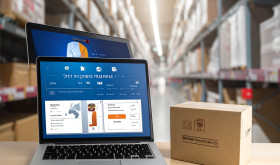
In today’s fast-paced, customer-focused market, companies need to deliver products fast, correctly, and across many sales channels. Whether a company sells on the internet, in stores, or through distributors, handling the order process well is critical. This is why an order management system is so important. It acts as the core of modern selling, making everything from getting orders to sending them out and helping customers after the sale much easier.
What Is an Order Management System?
An order management system serves as a digital hub to centralise and automate how businesses handle customer orders from different sales channels. It offers a unified view of order information—keeping tabs on each order from the moment a customer places it until it arrives at their doorstep.
The main job of an order management system is to make sure orders are recorded, processed, and shipped using the best available stock. It works as a link between customer-facing sales platforms (such as online stores, marketplaces, and brick-and-mortar shops) and behind-the-scenes operations (like stock control, warehouse activities, and shipping).
For instance, when a shopper buys something online, the order management system checks if the item is in stock, picks the best warehouse to ship from, works with shipping companies, and keeps the buyer updated on where their package is. All this happens behind the scenes, making things easy for both the company and the customer.
Key Functions of an OMS
A robust order management system does more than just keep tabs on orders. It encompasses a range of functions that bring visibility, control, and automation to the order lifecycle.
- Order Capture and Centralisation
An order management system integrates with multiple sales channels—like online shops, marketplaces, mobile apps, and brick-and-mortar retail systems—to capture orders as they happen. This gets rid of isolated data and makes sure that all orders, no matter where they come from, end up in one place.
- Inventory Management
With an order management system, companies get a clear picture of their stock across warehouses, stores, and distribution hubs in real time. This allows for smarter allocation and cuts down on the chance of running out or having too much stuff.
- Order Routing and Fulfillment
The system figures out where to fill an order by looking at things like whether products are in stock, how close warehouses are, what shipping costs, and how long delivery takes. For instance, if someone in Singapore places an order, it might be filled from a nearby warehouse instead of a main centre in another country. This cuts down on wait times and costs.
- Shipping and Logistics Coordination
Order management system platforms often work with shipping companies to automatically create shipments, print labels, and keep track of packages. Buyers can get up-to-the-minute info on when their stuff will arrive, while sellers can watch how shipments are doing in real time.
- Returns and Exchanges Management
Handling returns well is key to keeping customers happy. An order management system takes care of authorising returns, putting items back in stock, and giving refunds or replacements. This helps businesses keep an eye on things even after a sale is done.
- Analytics and Reporting
Detailed dashboards let managers look at order patterns, how well orders are filled, and what customers do. These facts help make choices based on data and show where areas can be improved.
Benefits of Implementing an OMS
A well-functioning order management system has a significant impact on a company’s day-to-day operations and how customers feel about their experience. Here are some of the main advantages:
- Centralised Visibility
One system for all order and inventory data gives you a full view across channels. This lets you make decisions faster and prevents errors caused by disconnected systems.
- Improved Order Accuracy
Using machines to do the work cuts down on typing things in by hand. This means fewer human slip-ups, so customers get the right stuff when they should.
- Enhanced Customer Experience
When you know what’s in stock, can track things in real time, and handle returns, customers trust you more. They see you as open and reliable.
- Operational Efficiency
Letting machines handle the routine stuff makes work smoother. It finds the best way to route orders and frees up your team. They can then spend time on things that matter more, like talking to customers and planning how to grow.
- Scalability
When a company grows its business—through new ways to sell, enter markets, or offer products—an order management system scales to handle more orders and complex situations.
- Cost Reduction
Better use of inventory and coordination of shipping helps cut storage and delivery costs, which directly boosts profit margins.
The Role of Order Management System in Omnichannel Commerce
Today’s shoppers want to buy stuff whenever and wherever they like. They also want to get their purchases how they choose—at home, from a store, or by the curb. This push for omnichannel commerce has made order management systems more important than ever.
An order management system helps companies bring together stock and order info from all their sales channels. This means a shop can send out online orders from a store close by (they call this ship-from-store) or let people save items online to grab later at the shop (click-and-collect). This kind of setup makes things easier for customers while helping businesses sell their stock faster.
Also, by syncing data across touchpoints, the order management system has an impact on consistent product availability information and pricing across channels. This eliminates the confusion and frustration that can happen when systems are disconnected.
Integration with Other Systems
An order management system doesn’t work alone. It connects with several other business systems, including:
- Enterprise Resource Planning systems to handle financial and supply chain data.
- Warehouse Management Systems to optimise inventory movement and storage.
- Customer Relationship Management systems to manage customer data and communication.
- E-commerce platforms like Shopify, Magento, or WooCommerce to sync online sales.
- Logistics and courier APIs to provide real-time shipping updates.
This ecosystem of connected systems makes sure data moves from when an order is placed to when it’s delivered. This cuts down on holdups and mistakes.
Picking the Best Order Management System
To choose the right order management system, you need to think about what kind of business you run, how many orders you get, and what other systems it needs to work with. Here are some things to keep in mind:
- Scalability and flexibility: The system should expand as your business grows and support various sales channels and markets.
- Integration capability: It’s crucial that the system works well with your current ERP, WMS, and e-commerce platforms.
- Automation and intelligence: Look for features such as automatic order routing, rule-based workflows, and forecasting driven by AI.
- Ease of use: A simple interface helps teams learn the system.
- Reporting and analytics: The system needs to offer useful insights to improve continuously.
- Customer support and reliability: Pick a vendor known for quick service and proven system uptime.
Future Trends in Order Management
The next wave of OMS solutions is becoming smarter and more data-focused. New trends include:
- AI and machine learning to predict demand and route orders.
- Cloud-based order management system to scale up, deploy faster, and access in real time.
- IoT device integration to track inventory as it happens.
- Features focused on sustainability, like keeping tabs on carbon footprints in logistics.
These new innovations will make things clearer, more productive, and quicker to respond. This gives businesses the power to keep up with what customers want, which keeps changing.
Conclusion
An order management system isn’t just a back-office perk anymore—it’s a must-have in today’s world of omnichannel selling. By bringing processes together, making workflows automatic, and letting you see what’s happening with orders in real-time, an order management system delivers on its brand promise: accurate, fast, and seamless fulfillment.
For businesses looking to grow, cut costs, and make customers happier, putting money into a robust order management system is one of the best moves they can make. In today’s tough world of retail and shipping, it’s not just about handling orders—it’s about getting good at it.










